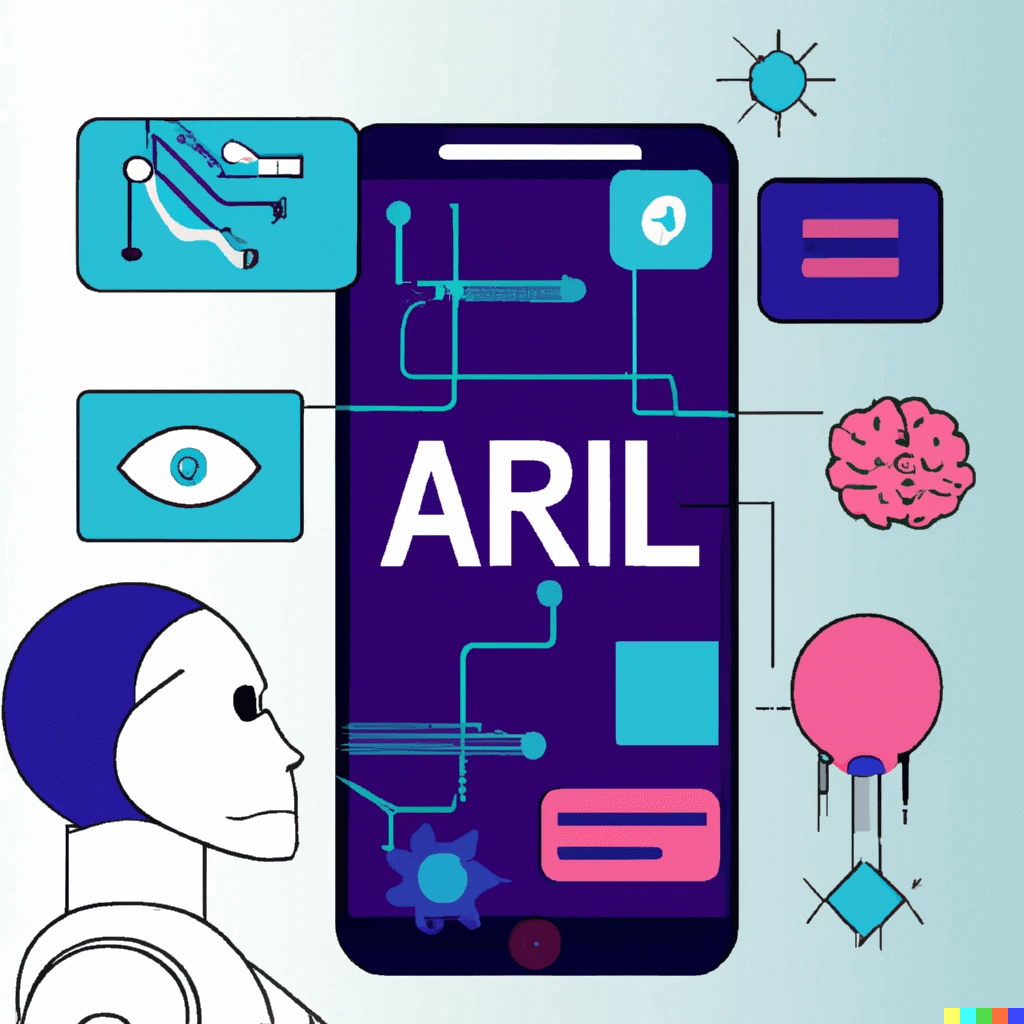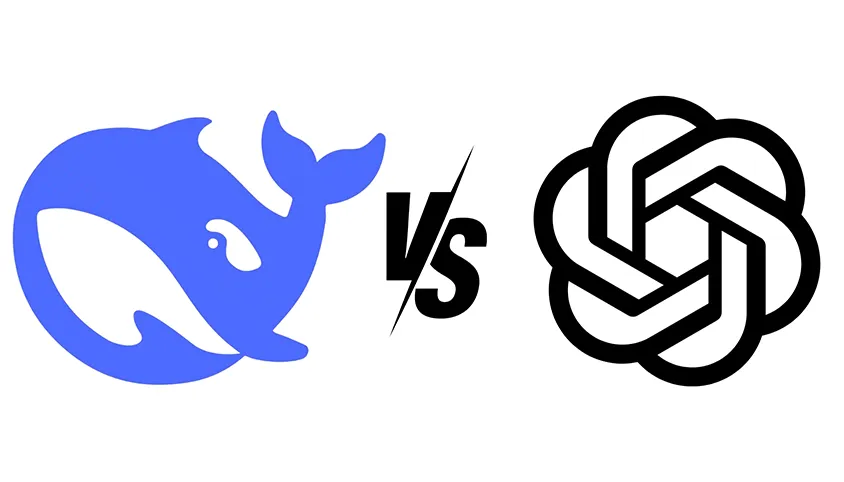Related Posts

Dec 2024
How Cloud Solutions Are Reshaping Mobile App Development?
Mobile app development is one of the most critical elements in modern innovation in the fast-paced world of technology. As reliance on mobile applications is growing across industries, demands on developers to deliver efficient, scalable, and cost-effective apps are increasing. Among the most transformative forces behind this evolution is cloud technology. Cloud solutions have made mobile app development revolutionary and, at the same time, enabled developers to design, deploy, and maintain their apps more efficiently than ever, making it scalable, cost-efficient, and delivering greater value to users. Here is how cloud apps with innovative app development tools are revolutionizing the mobile app development process. Cloud Technology in Mobile Development Cloud technology refers to the utilization of remote servers that are hosted over the internet for the storage, management, and processing of data, thus obliterating the need for local servers or personal devices. This paradigm has changed the way businesses approach app development. With cloud infrastructure, developers can build apps that are not only more robust but also more accessible and adaptable to rapidly changing market needs. The focus on cloud apps has grown exponentially with the ability to seamlessly integrate with modern development tools. This will enable businesses to provide personalized, secure, and high-performance apps with lower time-to-market. Here, the blog will explore the major market trends, with supporting evidence, to demonstrate how the use of cloud technology impacts the development of applications. Market Trends in Cloud-Based Mobile App Development 1. Increased Adoption of Cloud Apps Businesses and developers are rapidly shifting to cloud-based solutions to enhance agility and scalability. Gartner predicts that by 2025, more than 95% of new digital workloads will be deployed on cloud-native platforms. This trend underscores the growing reliance on cloud apps, which allow seamless integration with app development tools for faster deployment. 2. Focus on Hybrid and Multi-Cloud Solutions Companies are increasingly opting for hybrid and multi-cloud setups to avoid vendor lock-in and enhance flexibility. This approach enables developers to leverage the best features from various cloud platforms, optimizing the app performance while reducing operational risks. 3. Mobile-First Development Strategy With more than 6.8 billion smartphone users worldwide, developers are focused on mobile-first strategies. Cloud technology supports this trend by providing scalable infrastructure to keep up with the growing demand for mobile applications. How Cloud Technology Is Reshaping Mobile App Development? 1. Scalability and Performance Optimization Cloud solutions enable developers to scale applications dynamically according to a user's demand. The created scalar that ensures apps perform at their best even with peak traffic periods available ensures, for example, cloud computing platforms like AWS and Google Cloud offer elastic computing resources that adapt to fluctuations in workload, hence improving user satisfaction. Example: With cloud infrastructure, ride-hailing applications like Uber are able to handle millions of user requests simultaneously. Therefore, they are working without any problem across the globe. App development tools enable developers to track app performance in real-time and improve backend systems for greater speed and reliability. 2. Cost Efficiency Traditional on-premises infrastructure is usually very capital-intensive, with heavy investment in hardware and maintenance. Cloud technology eliminates this need with a pay-as-you-go model. This model is very helpful for startups and small businesses that are trying to reduce costs without compromising on quality. Evidence: A study reveals that business houses that opt for cloud solutions can save up to 40% in operational costs compared to on-premises setups. 3. Seamless Integration with App Development Tools Modern app development relies so much on tools that streamline coding, testing, and deployment. Cloud platforms allow for built-in APIs and SDKs so that applications can easily embed features like authentication, analytics, and push notifications. Tools such as Firebase, Azure Mobile Services, and AWS Amplify are essentials for a developer aiming to be efficient. Firebase Example: Enables developers to include real-time database capability and cloud messaging in applications to speed up development. 4. Improved Collaboration and Accessibility Cloud computing promotes collaboration since distributed teams can access the development environment from any place in the globe. This is quite vital for agile development methodologies, whereby several teams work concurrently on different components of an application. Case Study: Slack, one of the topmost communication platforms, uses cloud infrastructure to power its collaborative features. Slack has become a favorite among distributed teams. 5. Better Security Contrary to misbeliefs, cloud technology supports robust security protocols that protect any sensitive data of the app. Features like end-to-end encryption, secure APIs, and compliance with global standards (like GDPR, HIPAA) preserve data integrity. Counterargument : The argument is that third-party cloud providers increase the likelihood of security risks. Advancements in security technologies have diluted these risks, and consequently, cloud solutions are way more secure than traditional approaches. Issues Raised for Cloud Technology Cloud technology raises various issues, such as its credibility with doubts raised about downtime and data breach. These are some very valid concerns, but nowadays, modern cloud providers implement advanced redundancies and failover mechanisms to reduce or even minimize downtime. More importantly, continuous security updates along with compliance with international standards will help provide a safer cloud compared to other systems. For instance, AWS offers a 99.99% uptime SLA and uses the most advanced encryption to secure user data. Such measures help counterbalance counterarguments and further strengthen the credibility of cloud-based solutions. Conclusion: The Future of Cloud Apps in Mobile Development Cloud technology has undoubtedly revolutionized mobile app development by providing unparalleled scalability, cost efficiency, and increased collaboration. As companies begin to use more cloud apps and take full advantage of sophisticated tools for creating applications, the mobile development landscape will change more. Those developers embracing cloud technology will gain an advantage over others to provide value to users through quality applications. In conclusion, the shift to cloud-based solutions is not just a trend but a necessity in today's digital ecosystem. By addressing challenges and leveraging the full potential of cloud technology, developers can create apps that not only meet but exceed user expectations.

Jan 2023
Ready for the future? App ideas to create using ChatGPT in 2023
What is ChatGPT? ChatGPT is a variant of the GPT-3 language model developed by OpenAI specifically for conversational text generation. It has the ability to generate human-like responses to prompts in a conversation, making it a useful tool for chatbots, customer service agents, and other applications that involve natural language interaction. One of the key features of ChatGPT is its ability to understand and generate a wide range of natural language inputs and outputs. It can understand and respond to prompts in a variety of formats, including open-ended questions, statements, and commands. It can also generate responses in a variety of styles, including informative, persuasive, and humorous. In addition to its language processing capabilities, ChatGPT also has several other features that make it well-suited for use in conversational applications. For example, it has a large vocabulary and is able to generate responses in multiple languages. It also has the ability to learn from additional text data and improve its performance over time. Mobile app ideas using ChatGPT As a highly advanced language model, ChatGPT has the ability to generate human-like responses to prompts in a conversation. This makes it a useful tool for building chatbots and other applications that involve natural language interaction. Here are a few mobile app ideas that could be created using ChatGPT: Personal assistant app: ChatGPT could be used to build a personal assistant app that helps users manage their daily tasks and schedules. Users could ask ChatGPT to set reminders, make recommendations, or answer questions about various topics. Language learning app: ChatGPT could be used to build a language learning app that helps users practice their conversational skills. Users could have conversations with ChatGPT in their target language, and ChatGPT could provide feedback and corrections to help them improve. Mental health support app: ChatGPT could be used to build a mental health support app that provides users with a safe and anonymous space to talk about their feelings and concerns. ChatGPT could listen and respond to users in a caring and supportive manner, providing a sense of companionship and comfort. Social networking app: ChatGPT could be used to build a social networking app that helps users connect with others who share similar interests. Users could have conversations with ChatGPT to discover new topics and find like-minded individuals to connect with. Travel planning app: ChatGPT could be used to build a travel planning app that helps users plan their trips. Users could ask ChatGPT for recommendations on destinations, hotels, restaurants, and activities, and ChatGPT could provide personalized suggestions based on the user's preferences and budget. Customer service chatbot: ChatGPT could be used to build a chatbot that provides customer service for a company's products or services. Users could ask ChatGPT questions about how to use the product, request support, or get help with any issues they are experiencing. Virtual therapy app: ChatGPT could be used to build a virtual therapy that provides users with the opportunity to have therapy sessions with a virtual therapist. Users could have conversations with ChatGPT and receive support and guidance on a variety of mental health issues. Recipe recommendation app: ChatGPT could be used to build a recipe recommendation app that helps users find new recipes to try based on their preferences and dietary restrictions. Users could ask ChatGPT for recommendations, and ChatGPT could provide a list of recipes that meet the user's criteria. Fitness tracking app: ChatGPT could be used to build a fitness tracking app that helps users set and achieve their fitness goals. Users could ask ChatGPT for workout recommendations and track their progress with ChatGPT's guidance. Virtual shopping assistant: ChatGPT could be used to build a virtual shopping assistant app that helps users find the products they are looking for and make informed purchasing decisions. Users could ask ChatGPT for product recommendations, comparisons, and reviews, and ChatGPT could provide personalized responses based on the user's needs and preferences. These are just a few examples of the many creative and innovative mobile app ideas that can be created using ChatGPT. By leveraging the power of natural language processing, these apps can provide users with personalized and engaging experiences that help them accomplish their goals and improve their lives. Mobile app development companies listed on RightFirms can help you build your app using ChatGPT by leveraging the advanced natural language processing capabilities of this powerful language model. These companies can work with you to understand your app idea, assess your needs, and develop a custom solution that uses ChatGPT to provide users with personalized and engaging experiences. Advantages of using ChatGPT for mobile apps There are several advantages to using ChatGPT for natural language processing in mobile apps: Human-like responses: ChatGPT has the ability to generate human-like responses to prompts in a conversation. This makes it a useful tool for building chatbots and other applications that involve natural language interaction. By using ChatGPT, developers can create apps that provide users with personalized and engaging experiences that feel more natural and human-like. Flexibility: ChatGPT is a highly flexible language model that can be used to create a wide range of natural language processing applications. It can understand and respond to prompts in a variety of formats, including open-ended questions, statements, and commands. This makes it well-suited for use in a variety of mobile app scenarios, including customer service, language learning, and mental health support. Large vocabulary: ChatGPT has a large vocabulary and is able to generate responses in multiple languages. This makes it a useful tool for building apps that need to support a wide range of languages and topics. Ability to learn from additional data: ChatGPT has the ability to learn from additional text data and improve its performance over time. This makes it a useful tool for building apps that need to adapt and improve their performance based on user feedback or changing circumstances. In conclusion, ChatGPT and other language models have the potential to revolutionize the world of mobile app development. Their ability to understand and generate human-like responses to prompts in a conversation makes them useful tools for building chatbots and other applications that involve natural language interaction. By leveraging the power of natural language processing, developers can create a wide range of mobile apps that provide users with personalized and engaging experiences. Whether it's a personal assistant app, a language learning app, a mental health support app, or any other type of application, ChatGPT and other language models can help developers build apps that are more intuitive and user-friendly. Looking to the future, it's likely that language models like ChatGPT will continue to evolve and improve, enabling developers to create even more sophisticated and advanced mobile apps. As these models become more powerful and flexible, the possibilities for mobile app development are endless, and it's an exciting time to be a part of this growing field.

May 2022
Native Apps vs PWA: Which is right for your business?
Technology has revolutionized the eCommerce industry. The way people perceive online retail has changed drastically with new trends that reshape the industry every day. With the rise of mobile marketing, setting up your online store is now easier than ever. Businesses all around the globe have understood the significance of smartphones in the industry and have begun to develop native applications to participate in the mobile eCommerce business. In addition to native apps, progressive web apps are another form of retail technology gaining favor among organizations. Progressive web apps have been openly recognized as excellent sales tools by many large organizations around the world. Both PWAs and Natives Apps have a huge number of benefits for your eCommerce business. Depending on your business requirements, PWAs and Native Apps provide unique and unified solutions for all businesses alike. Here are the top differences between Native Mobile Apps and Progressive Web Apps to help you make an informed decision based on your business needs. Read on! Native Mobile Applications Native Applications are software applications created for industry-specific platforms using a coding language (JAVA, Kotlin, Swift, etc.). Prime examples of excellent Native Applications are Spotify, Instagram, Facebook, and Pinterest. Benefits of Native Mobile Applications Functionality Native Applications allow for much more complexity in design compared to PWAs. Push notifications: Having push notifications increases the likelihood of users engaging with your brand and returning to it. You can create the function from scratch or leverage third-party integration with a native app. Geofencing: In real life, geofencing allows developers to create virtual geographical boundaries using GPS. When a user enters these boundaries, the app can initiate phone activities. When combined with push notifications, geofencing is an effective way to contact and engage your users. Currently, this feature is only available in native apps. Other Smart features: Some functions, such as proximity sensor, ambient light sensing, and smart lock, cannot be accessed by PWA. Interaction with Other Apps: Native apps can interact with other apps to make calls, register, add events to the schedule, check out, etc. Performance Integrated with the host operating system, Native Mobile Applications outperform web applications almost every time. Because PWAs run in the browser, they have more latency and use more battery than native apps. The underlying operating system can be integrated into a native program. It can access device hardware to perform more calculations and provide a better user experience. When it comes to performance, Native Applications take the win as a native app is more powerful and native code is faster. Security Other than hosting security measures such as HTML encryptions and the use of digital certificates for authorization, Native Applications provides you the option to add in-built security measures. If your software requires a login, features such as Multi-Factor Authentication can be used. Certificate pinning is another feature that is useful in adding layers to the security. Certificate Pinning restricts the number of certificates considered valid for a website to reduce the risk of misissued or fraudulent certificates. Furthermore, because an app must pass the App store's security requirements before being launched, people are more inclined to trust it than a URL. Progressive Web Applications (PWA) A Progressive Web Application is an application that uses web technologies like HTML, CSS, and JavaScript yet appears and functions like a native app. Progressive web apps are also simple, dependable, and enjoyable to use. A few famous examples of PWAs are Flipkart, Pinterest, MakeMyTrip, Wego, AliExpress, and more. Benefits of PWAs Cost-Effective A progressive web app is less expensive to develop when compared to a native application. You will need to learn the language and create a version for each platform if you are making a native application. It implies you will need at least two iOS and Android versions and the resources to maintain and upgrade them. Depending on the app's purpose and complexity, this can take a long time and cost lots of money. It's easier to create and upgrade a progressive web app. You can have a single codebase that runs on different platforms, not just the two most popular ones. You only need one version of the app with a responsive design, and it will look the same across all devices. Easy Installation In a given month, the average smartphone user downloads zero apps. A progressive Web Application, on the other hand, doesn't need to be downloaded or installed. Visitors can bookmark and add the app to their home screen with only a few clicks from the browser. The PWA will appear on the user's home screen and in the app directory, provide notifications, and integrate with the system settings. Furthermore, compared to an app, a progressive web app takes up less space. Visitors can access the app and share it with their friends by typing in the URL. There's also no need to update the software because it automatically launches with the most recent version. Discoverability Pages from native apps cannot be indexed or listed in a search engine. Customers can find your application in the app store or on the app store's website. Unlike native apps, PWAs function similarly to websites, allowing them to be indexed by search engines. PWA has improved performance and engagement compared to responsive web pages, allowing your website to rank higher in search results. Here are a few more steps to ensure that your PWA is SEO-friendly: Implement an SEO structure and target keywords relevant to your business. To avoid duplicate content, use rel=canonical for various URLs. Keep an eye out for URLs that begin with a "#," as Googlebot will not index anything after the hashtag. PWA or Native Mobile App: Which is Right for Your Business? Here are some of the key elements that differ between a PWA and a native application and often are the make-or-break factors when making a decision. Convenience The web app does not need to be downloaded. Instead, it can be accessed directly from the web browser on a smartphone or computer. A user can also add a Progressive Web Application shortcut to their home screen, which they can access at any time. The installation of a native app, on the other side, takes a long time. Before clicking on install, a user must first look for a particular app in the relevant store. Before using the native app, the user must grant the necessary permissions. Therefore, PWA takes the cake when it comes to convenience and ease of use. Distribution Strategy Native applications need careful planning and development to be taken live on your respective app stores. On the other hand, All you have to do with PWA is make sure your site is up and functioning on the internet. In addition, web applications can be accessed solely through a browser. Chrome, Firefox, Edge, and Safari are a few browsers that support PWAs. As a result, a PWA can assist you in reaching a wider audience with your app. Progressive Web Apps are now supported in the Google Play Store, allowing you to take them online with ease. Development Cost When the development costs of a PWA and a native app are compared, PWA emerges as the winner. It is because when designing a PWA, you require a single codebase that works on a variety of devices. You can also tweak it with tools like Google Lighthouse. Developing a native app, on the other hand, takes a significant amount of effort and money. You will also have to spend resources on maintenance. Aside from that, there are a multitude of other factors that influence the cost of developing native apps. Go for PWAs: If you're just getting started: If you want an easy-to-use app for your users, PWA is the way to go. No download is required, and you may engage with the user via push notifications. If you're working on a tight schedule and a limited budget: The development and publication of PWA involve less time and money. If you want to raise brand awareness and boost your SEO: PWA is similar to any other website in a way that it reaches a large number of people. Go for Native Applications: If you want to increase your brand's trust: Apps published on app stores are more reliable, while native apps have additional security features. If you want to make the most of your smartphone's advanced features: In cases when geofencing and sensor/detection are critical to the user experience, or if your product demands a lot of processing power. Wrapping Up Digitization has forever changed the way we buy and sell goods and services. New trends are coming up every day, and the world has embraced technology as a part of commerce. Native Applications and Progressive Web Applications (PWAs) are two solutions for providing a consistent experience to users with a variety of benefits. While developing a PWA is less expensive and faster than developing a native application, both have their shortcomings as well. Native applications are great for the long run when you have an established business but expensive to set up and harder to distribute. Native Applications and Progressive Web Applications are both here to stay, and the decision should be made based on your project's goals and resources.








